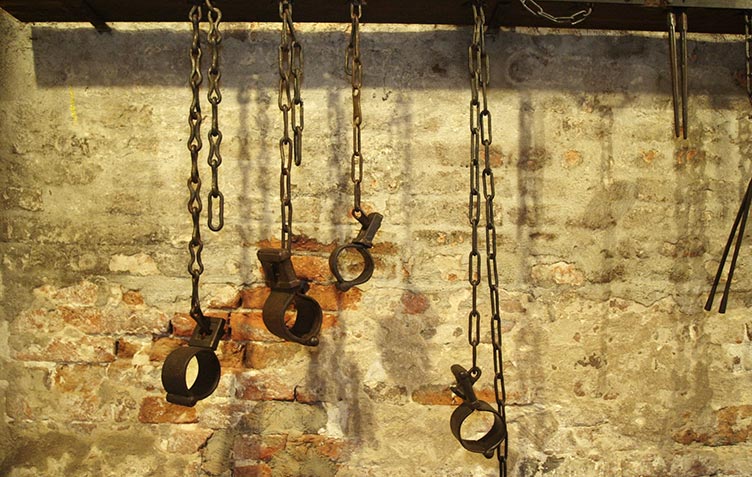
Criminal jurisdiction
The early development of criminal jurisdiction in Nuremberg remains hazy. In the beginning, jurisdiction was the privilege of the Empire and was controlled by the Royal Steward. In the thirteenth century, the Burgrave took over jurisdiction. And finally, from the beginning of the fourteenth century, the Imperial Bailiff was obliged to carry out the judgments delivered by the Jury (part of the City Council).
The "Gerüft"
Whenever a culprit was caught red-handed, they had to be brought to court with the corresponding "Gerüfte" (court cry). In the Middle Ages, the word "Gerüft" or "Gerücht" signified a call uttered by someone who had been wronged, the so-called "hue and cry", such as "O Weh!" or "O Wappen!" or similar. Any adult who heard this cry was supposed to rush to help overwhelm the wrongdoer, tie them up, and attach the "Handhafte" (the stolen goods, or the hand or the finger of the murdered person) to their back.
The formal accusation of the person arrested or pursued with these cries also had to begin with a "Gerüft": for example, "Murderer!" or "Thief!" The arrestee was then dragged to the judge in the City Hall, accompanied by the continuous calling out of their crime.
In later years, it was sufficient for the accused to be convicted by seven sworn witnesses. This procedure was superseded in 1320 by the procedure of establishing one's "good repute".
In the early fourteenth century a criminal code – the "Halsgerichtsordnung," with the title "How to Sit in Judgement Over A Person" – was drafted and written in a book of statutes. In 1532, Emperor Karl V published a criminal code applicable to the entire Empire.
The torture of the accused was only abolished in 1813 by the Bavarian Criminal Court.
Last meal before the execution
The only room with natural daylight was the "Hangman's Room," furnished only with a table and a chair. This is where those condemned to death could have their last meal before their execution.
The food provided in the last three days before the execution was quite rich, which was probably intended to pacify the prisoners.
A specification of costs lists the food served during the final three days: for example, this was the menu for one final meal:
- 1 egg gruel
- 2 potted chickens
- 1 roasted leg of veal
- 1 ½ liters of wine
- 6 rolls
Place of execution
The execution site was the "Rabenstein" scaffold in the Galgenhof area of town just outside the city walls, roughly where today's main railway station is situated. The place of execution, a brick structure of considerable proportions, was established there in 1441. This has been concluded from a report on the renovation of this site in 1605.



